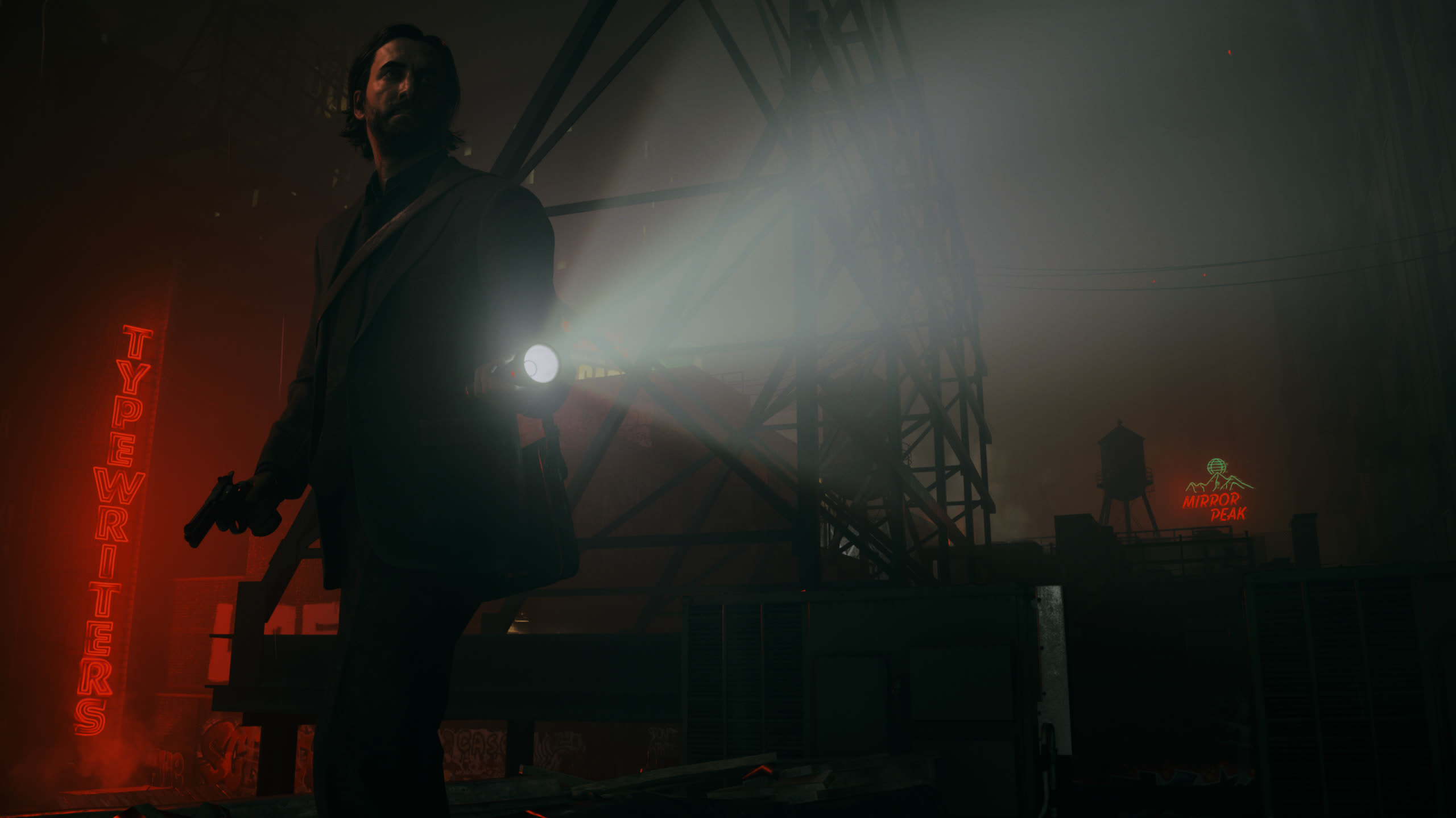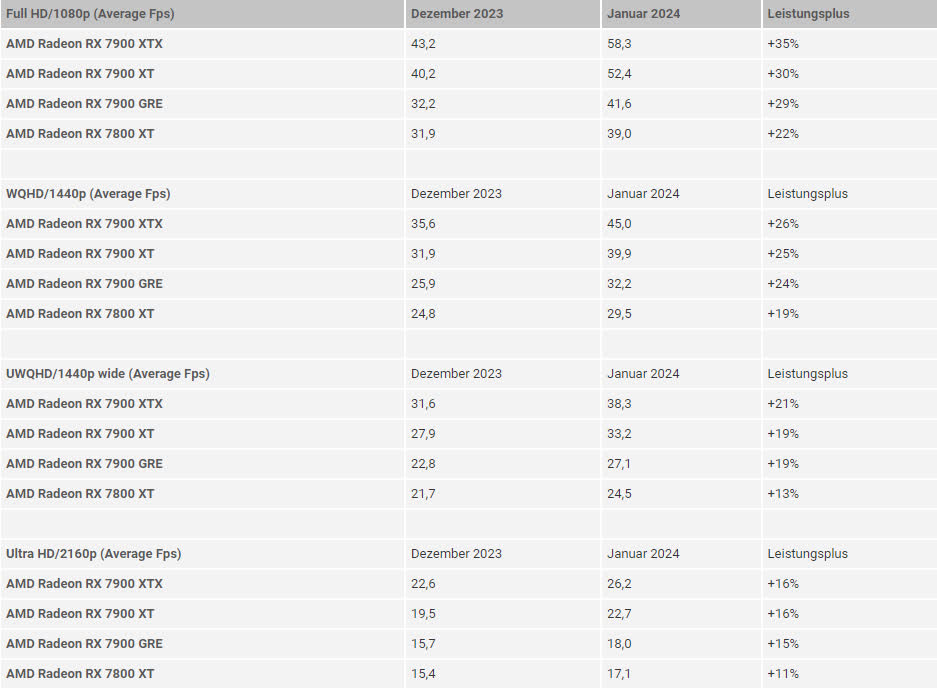In context: Alan Wake 2's use of path tracing is arguably its leading technological achievement, but so far, the feature has only attained playable framerates on Nvidia graphics cards. AMD's next major driver update, currently available in beta, takes a significant step toward closing the ray tracing performance gap between the two GPU vendors.

New benchmarks from German outlet PC Games Hardware indicate that AMD's latest preview drivers can increase Alan Wake 2's ray tracing performance by up to 35 percent. It's unclear if other titles with heavy ray tracing implementations see a similar benefit.
Alan Wake 2 hasn't received any significant patches since early December, around the same time AMD released its current stable Radeon drivers, so the framerate increase comes entirely from the 23.40.01.10 preview driver. At 1080p with maximum graphics settings and FSR 2 quality mode engaged, Team Red's flagship 7900 XTX manages an average of 58.3fps. It still lags far behind the 75.4fps of its supposed competitor – the GeForce RTX 4080 – but the new drivers give the 7900 XTX a 35 percent lift over its performance from last month.
From there, the gains with lower-tier GPUs or at higher resolutions are smaller but still meaningful. For example, the 7800 XT receives a 22 percent boost at 1080p and an 11 percent improvement at 4K. Moreover, Alan Wake 2 features multiple RT presets, so turning down some settings could bring a stable 60fps experience within reach.
Image credit: PC Games Hardware
Since the framerate increase comes entirely from the driver update, other games that substantially employ ray tracing, like Cyberpunk 2077, might deserve another look. TechSpot's analysis of the Phantom Liberty expansion from September shows the 7900 XTX falling well behind the 4080. Outside of Alan Wake 2 and Cyberpunk, path tracing is still mainly seen in updates for retro games like Portal RTX, Quake II RTX, and Sultim Tsyrendashiev's mods for numerous classics.
AMD's upcoming driver is set for a January 24 stable release. It will introduce Fluid Motion Frames (AFMF), an alternative version of FSR 3 that, while less effective, enables users to implement frame generation on most games at the driver level. Although Alan Wake 2 doesn't support FSR 3, AFMF could improve the game's presentation further.
Aside from ray tracing, Alan Wake 2 is infamous for its high minimum system requirements. Aging GPU generations like GTX 10 and Radeon RX 5000 struggle to run Alan Wake 2 despite being perfectly serviceable for many recent games because they lack mesh shader support. An unofficial Vulkan conversion can improve the situation but can't perform miracles.
https://www.techspot.com/news/101540-amd-latest-beta-driver-dramatically-improves-alan-wake.html
